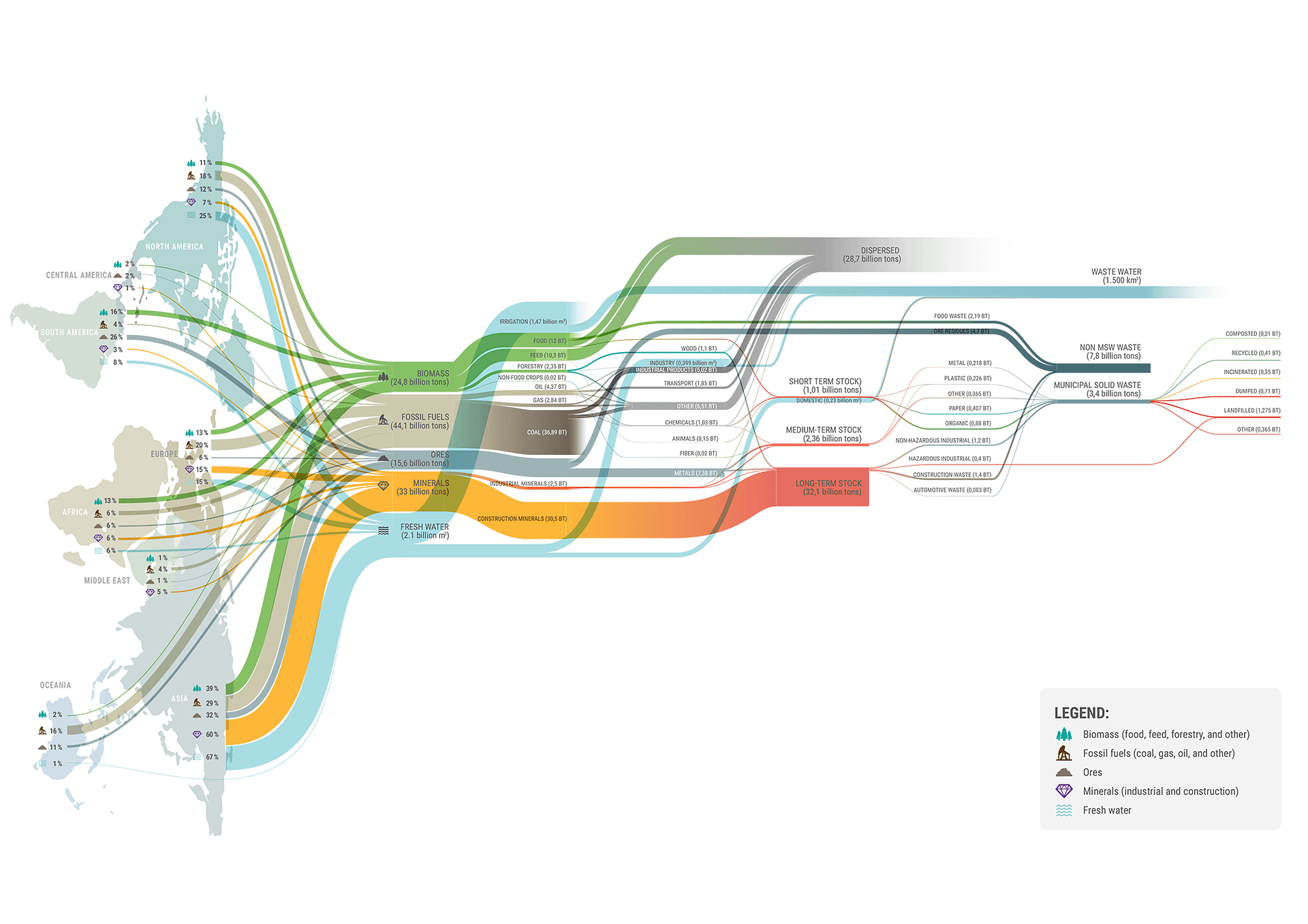Mapping total resources consumed for the global economy
A material flow analysis of 2010 shows that we have extracted an estimated 71.8 billion tonnes of material from the Earth to fuel the global economy.
Metabolic performed a material flow analysis of the entire global metabolism and found that reducing material throughputs, increasing efficiency gains, extending useful lifespan of materials and products, and closing resource loops are all essential for fixing a broken, linear system.
- Date: March 2012
- Data source: Metabolic
Today’s linear economy is consuming finite resources. Before transitioning to a circular economy, first the scale of the current challenge must be identified – how much of the planet’s resources are we consuming?
Metabolic undertook a global metabolism flow analysis which particularly focused on the key industries primarily responsible for the major biospheric and human wellbeing issues. Resources included in the analysis included biomass (food, feed, forestry, and other), fossil fuels (coal, gas, oil, and other), ores, and minerals (industrial and construction).
The analysis showed that we have extracted an estimated 71.8 billion tonnes of material from the Earth to fuel the global economy. This immense material throughput and the inefficiencies of each stage of material and product lifespans and the overall speed at which they are extracted call for a radical rethinking of how the current system is designed. Recommendations included reducing material throughput, increasing efficiency gains, extending the useful lifespan of materials and products (both within a single product’s life cycle and across product cascades), and closing resource loops, in order to fix the global metabolism and changing the way the current economic system is functioning.

“The linear ‘take, make, waste’ model of production-consumption systems is self-evidently unsustainable, with the operation of some key industries being primarily responsible for the major biospheric and human wellbeing issues.”
Eva Gladek, Metabolic
Director of Sustainable Cities & Regions
ANY QUESTIONS?
For more information about this project, please get in touch.





